Explore The World
Is this a future you would want to live in? Take a moment to share your thoughts about the future and the world described below by clicking the feedback button.
Timeline
A Day In the Life in 2045
Sheniza, Singapore, 12
Sheniza, 12, wakes up all excited. Today she and her classmates will be embarking on a school trip to Kampong Glam (Singapore), as part of Hari Raya festivities. As a girl whose ancestry includes Malay, German, Chinese and Laotian, she has always been curious about her Malay heritage. She puts on her augmented reality glasses and selects “Family – Maternal” mode. “Grandpa”, Sheniza calls out in Bahasa Melayu to a hologram projection of Datuk Ariffin in the living room, “I hope to make those layang-layang (kite) you’ve been telling me about!” The “Datuk” looks up from his newspaper and beams.
In the kitchen, her parents were tending to the indoor vegetable garden – rows and rows of herbs, beans, vegetables and fruit of both local and imported varieties (like saffron) were stacked up high. Her mom checks the computer interface that monitors each plant’s pH, water and light levels. “Vegetable curry for dinner tonight!” said her dad, “and our neighbours will be coming over too.” Sheniza grabbed her breakfast bag, took a bite of the humongous ripe tomato in her mom’s hand, and kissed her parents goodbye. Already, two of her best friends, Mai and Aliza, were at her front door. “Let’s go, Sheniza!” They hop on the autonomous (driverless) school bus.
“Hey Mai, there’s something different about you today, but I can’t quite figure what that is?”
“It’s my new uniform, perhaps?” Mai shows it off proudly. “It’s modelled after the Vietnamese ao dai. I designed it myself using the Fash-dash app and 3D-printed it at my relatives’ over the weekend. Pants are so comfortable!”
“Oh la la, and is our school OK with you adapting it like this?” asked Aliza. “Yup, we just have to use the school colours and fabric. They’re pretty flexible.” Mai answered.
Sheniza makes a mental note to do the same, for she has never been a fan of wearing skirts.
“What have you been up to, Sheniza?”
“Oh I was at the Rainforest World Music Festival with my cousins last weekend at Sarawak (Malaysia). I mean, we were there by hologram, of course.”
“Exciting, how was it?”
“Phenomenal. So I’ve already been playing the gambus (Malay lute) for a year now. I joined a masterclass there, and the ten or so professional musicians there actually managed to coach three hundred of us online. They were using this technology to observe our playing techniques and coached us individually. And at the end we played a piece together and then jammed for a while. We’re actually going to jam on Thursday after school, you both should come.”
“Super, I’m definitely in,” cooed Aliza, while Mai flicked a thumbs up.
They soon arrived at Kampong Glam. Traffic was seamless. “What year is it this time, 1920?” one classmate exclaimed. “1892, to be exact,” said his friend, glancing up from his device.
Hundreds of layang-layang of different colours were in the air – dipping, hovering and turning – like the dance of migratory starlings. My grandfather would love this, thought Sheniza. In the backdrop were kampong houses, longhouses on the river (artificially created to manage the rise in sea levels) amidst transplanted mangroves. Street vendors were making traditional kuehs (cakes) and putu piring, musicians were playing the angklung and artisans were making pottery and craft. The village was in celebration and rows of round tables were decked out for a feast.
It turned out that the street vendors and artisans were everyday citizens who came to pitch in for the day’s celebration, under the tutelage of the Malay community.
“Oh, there are overseas students here too!”
Aliza could be spotted some distance away, chatting to a Turkish boy and a Mexican girl, who have joined by hologram. Sheniza in the meantime was enthralled by the performance of a musician storyteller, who sang verses of Malay poetry. She and the listeners put on their VR goggles and were treated to images of the past curated by the storyteller. As she interacted with the story, it evolved – and she could see how other participants interacted too.
Finally, it was time for lunch. Sheniza and her classmates went to help set the tables and serve lunch. As everyone settles down at the table, Mai whips out her phone. “Just going to check that there’s no dairy in this. Ah, it’s all good.”
After lunch, the students gathered to head to school for a couple of hours. “Görüşürüz! (See you later!)” Aliza waved to the Turkish boy as his hologram disappeared.
AI in Community
On the journey back to school, Sheniza reflects that to date, her interests have mainly been in music, and that although she loved listening to stories, and had a great appreciation of history, culture and poetry, it had always been difficult for her to read. She would also love to be as multilingual as her friend Aliza and many others are, who spoke at least seven languages. Was there perhaps something not too right with her or her education? Although exams were now optional, she still hopes to obtain a certification and one day become a musician-storyteller-historian.
Back in the classroom, she told her teacher about this. “Oh Sheniza, yes we’ve noticed that you might have a reading disability. We will be switching you to a more auditory and interactive-based curriculum, although it’s still relatively new.” Still a little worried, Sheniza told Mai and Aliza about this.
“Oh, we should link you up with the student societies at the InterNetional Initiative!” said Mai. “And I’ve heard that auditory-based learning style is quite common in Finland, perhaps you could also try going on hologram student exchange there for a while?”
For the remaining hour in the classroom, as suggested by her teacher, Sheniza tries the interactive “Living history” class, which featured a debate-style format, and realises that she was absorbing the content much better. Further, an AI transcription tool helped take notes that fitted her learning preferences. Sheniza realises that she had many options and that her future was bright.
.
Hikaru, Nigeria, 24
“This is the consolidated report of user feedback on the use of AI and machine learning in the automated diagnosis of sepsis in the city hospital of Abuja (Nigeria). Male patients, aged 45 and above, have reported 80% satisfaction with the AI medical assistants involved in patient care. Female patients, aged 18 to 45, and pregnant, are twice as likely to report lower levels of satisfaction compared to older female patients. For patients with gender labelled ‘Other’, there is insufficient data available to produce statistically justifiable conclusions. Across the various ward classes – ”
“Computer, pause. Repeat the last sentence.”
The speaker blinks, processing the instructions.
“For patients with gender labelled ‘Other’, there is insufficient data available to produce statistically justifiable conclusions.”
“Hmm. That’s weird.” Hikaru scratches his head, confused at the mysterious absence of one such key demographic in the survey aimed to measure the impacts of AI-assisted diagnostic tools used in medical settings. “What happened to all the trans people?”
The computer gives a confused beep.
“Error due to non-specific fields of enquiry. Can you rephrase?”
Hikaru sighs. This is his third week in a new job as a policy analyst at the Ministry of Health, where he has been tasked to monitor AI risks and safety in medical care. His personal assistant, an AI system, is helpful only insofar as Hikaru speaks with enough precision when expressing his request. Mostly, it has been a blessing to have a digital PA powered by AI – though newer and much smoother systems running on AGI are still too expensive to be adopted in workplaces – tasked to handle all the mundane parts of a “9 to 5” office job. Without having to sort through junk emails in the inbox, or manually coordinating diaries to schedule a meeting, work processes have become more streamlined. Naturally, for people like Hikaru, they are now free to direct their full attention into tackling the larger, messier, and to-this-day unanswered questions in AI and data governance. But for people like Hikaru’s supervisor, this is a problem.
In his first week at the office, his supervisor grumbled about how times have changed and how government officials cannot get away with as much sugar coating as they used to do. Everything is different now that citizens have access to impartial news sources. Community-specific gazettes, armed with eagle eyes, are always at the ready to scrutinise and pour over all the wrong moves conducted by the government. Hikaru thinks this is a good thing, then again, his views have often been different from his supervisor.
Signing up for this job was not a bed of roses: Nigeria is so different from Hikaru’s hometown Japan. It was hard to accept and just be happy with Nigeria’s status quo – though it is already much ahead of the times when death penalty was possible for homosexual acts.
Hikaru’s mind wanders, but the statistical problem at hand remains. It is not exactly clear why the survey tool has been unable to capture meaningful responses from patients outside of ‘male’ and ‘female’ classifications.
“Computer, why there is insufficient data on patients with gender labelled ‘Other’?”
“Out of the total population of 368 patients with gender labelled ‘Other’ under the care of the city hospital, only 7 responded to the online survey. The click-through rate on the hyperlink suggests that about 63% viewed the survey, but the majority did not complete the questionnaire.”
Feeling more confused, Hikaru decides to dial up a contact working in the LGBTQIA+ network of the InterNetional Initiative. After a short moment, a small holographic projection pops up and Hikaru is greeted by a familiar face. “Hello again, Hikaru! What can I do for you?”
Sighing, Hikaru describes the oddity of the situation. His trusted friend, Zhong, responds with a knowing look. Technology with a capital T, it seems, has made life much easier for some but not necessarily so for others. About eight years ago, a municipal hospital fell victim to a cyberattack and refused to pay ransom. The backlogs of highly sensitive personal data of their patients were released into the publicly accessible websites scattered across the internet. While AGI tools have helped mitigate the extent of the breach, the cyberattack still had serious consequences for those who declared their gender identity: many were doxxed and outed against their will, suffered social ostracisation, and economic losses. Since then, safe digital spaces have been implemented to safeguard the security of personal data stored in public infrastructures, and the country enacted protection against surveillance laws. But many in the LGBTQ+ community and their allies continue to remember this incident like it was yesterday. Hikaru’s heart sinks. Although physical abuse rates of queer people have declined dramatically over the past decades and incarceration is abolished, more still remains to be done.
“Zhong, can you recommend a member from the local chapter of the InterNetional Initiative to advise on this? This is more than about who fills out an online survey. If there is a deeper apprehension preventing specific demographics from using our existing channels of feedback to voice their concerns, I suspect this challenge needs to be addressed on a larger scale. Trust foundations are imperative to AI governance, and we must work towards trust-repair in the community. We will, of course, make a donation to your organisation as a gesture of gratitude.” Hikaru’s digital PA produces a perfect memo of the key points of their conversation.
“Will you consider donating a small collection of holographic educational materials to our local chapter in Brunei? Our members have been working to build a digital community library aiming to raise awareness of intersectional environmentalism among young children and senior citizens.”
“Consider it done!”
Hikaru thanked him again as the hologram subsided. The road is still long, but there is hope – so he told himself. After all, even Japan 20 years ago was not as advanced as Abuja today. Reassuringly, his PA seconded a beep of affirmation.
Answers to prompts
Q. AGI has existed for at least five years but the world is not dystopian and humans are still alive! Given the risks of very high-powered AI systems, how has your world ensured that AGI has at least so far remained safe and controlled?
A. To counter nationalistic approaches working against a cohesive and global AI regulatory agenda, the launch of the “AI in Community” movement has seen greater public scrutiny over the transparency and accountability of private-and-public bodies responsible for AI safety in community spaces. More civil society groups and nominated community leaders are also invited to steer the early design, deployment, and annual reviews to monitor the continual social impacts of AI tools. Widespread adoption of participatory design and governance methods by start-ups has received overwhelmingly positive community response, prompting the whole industry to leverage community engagement in the early formulations of their design causes. The shift from tokenistic participation calls for greater collaboration between practitioners in industry, academia, and government to safeguard the interests of historically marginalised people when defining AI risk.
One such grassroot network is the “InterNetional” initiative which, over the years, has facilitated regional forums and international dialogues on adopting AI macrostrategy to identify risks in the development timeline of Artificial General Intelligence (AGI). A positive result is the establishment of a large scale AI safety funding in conjunction with hard law instruments prohibiting the use of AGI for malicious purposes, alongside participatory certification and audit mechanisms to enforce high standards of AI safety. There is also increased funding for third sector organisations to upskill in the areas of technology, law, and social justice advocacy; with fairer compensation made to volunteers involved in organising community-based activities, the barrier of entry into key dialogues and public consultation is reduced.
Q. The dynamics of an AI-filled world may depend a lot on how AI capability is distributed. In your world, is there one AI system that is substantially more powerful than all others, or a few such systems, or are there many top-tier AI systems of comparable capability? Or something else?
A. Diverging from present-day dynamics of AI solutions and capabilities clustering in a small handful of techno-powers (e.g. USA, China, and Europe), our world sees a wider distribution of power balance among the public sector, private sector and civil society (made of AI recipients and data subjects who can exercise their voices – via digital self-determination – in how their personal data is collected and reused to develop AI tools). The reversal of entrenched power dynamics across the public-private-community continuum prompts the development of AI systems in close alignment with the agreed priorities of the recipient community. Globally, AI tools that are most widely distributed and used in community spaces can be seen in utilising stronger pattern recognition capabilities within the energy sector to fight climate change; furthermore, as diagnostic tools to support medical staff in the effective delivery of crucial healthcare services (e.g. detecting lung cancer risks via x-ray scans); and, most crucially, AI tools are used to promote wider access to affordable and personalised education to counter persistent labour shortages in teaching and child care services. On the other hand, an international treaty or a moratorium outlines unacceptable AGI applications. One example is the use of AI/AGI tools to “mind read” human emotions for commercial gains, behavioural manipulation, and, especially in the case of data subjects with protected characteristics, for policing and criminal prosecution purposes. Another clear “red flag” is applying AI/AGI tools into the military arena to create weapons of mass destruction.
Q. How has your world avoided major arms races and wars, regarding AI/AGI or otherwise?
A. Following the “AI in Community” movement – wherein community members demand aligning AI capabilities with public benefit, above and beyond the wealth creation agenda – civil society has stronger engagement in AI/AGI and data governance. This activity is facilitated by open data, which has improved public access to accurate information. Coupled with affordable and highly-personalised education, most community members of all age and socio-economic backgrounds can learn about socio-legal issues in AI/AGI technology. Without fake news to provoke social polarisation, a highly-educated public effectively steers their shared AI futures by speaking from historical insights.
With rhetoric and government propaganda having less sway than before, public sentiments on key issues such as major arms races and war – with or without using AI/AGI – becomes key to government administrations trying to remain in democratic “power” (which are can be revoked by their electorate upon an elected official’s failures to act in the interests of public good) revert to good behaviours. Locally and globally, AI and data governance have since evolved further into the participatory models. The continual distribution of decision-making powers away from a narrow group of stakeholders (e.g. elected officials and those with enough wealth to lobby for certain agendas), the increased presence of public accountability in AI/AGI governance has reemphasised the values of transparency, cooperation and peace. These conditions encourage more cross-cultural collaborations and global partnerships in AI/AGI governance to promote shared understanding on the common ethical responsibility to use AI for public benefit.
Q. In the US, EU, and China, how and where is national decision-making power held, and how has the advent of advanced AI changed that?
A. EU
By 2045, lawmakers enshrined the right to democracy in member states’ constitutions to mean that participatory methods are necessary in all data-driven decision-making systems. The legislative changes have reduced information asymmetries skewed towards private tech companies; instead a healthier equilibrium is achieved between public sector, private sector and the public which work together in collaboration.
Advanced AI particularly helped with meaningful transparency – the educated public is better able to enforce their rights and assess current and future impact of decisions by data-driven systems adopted by the government.
US
National decision-making power still vests largely in the President, but a new youth assembly comprising diverse voices is formed with a collective power to veto decisions, including on matters such as war, sanctions and climate change. A similar trend towards digital self-determination occurs, which pressures Silicon Valley into democratising the Internet and tackling harmful algorithms for public good.
China
The national decision-making power is still strongly centralised in the government, however by 2040 the country has transitioned from autocracy to a hybrid set up (similar to Singapore in 2022). Advanced AI in 2040 further accelerated this transition for China to move towards DSD and open data, in response to rising social ills such as debt and cultural repression.
Q. Is the global distribution of wealth (as measured say by national or international gini coefficients) more, or less, unequal than 2021’s, and by how much? How did it get that way? (https://en.wikipedia.org/wiki/Gini_coefficient)
A. In 2045, the global gini index has fallen from 2022’s estimated figure of 70 to match 2013’s 62.5. The COVID-19 pandemic exacerbated global inequality, but since AI in Community took off, AI has been positioned to narrow wealth gaps both among and within countries. With fair access to data and knowledge comes the rapid development of previously underprivileged areas. Empowered by decentralised AI deployment, citizens are now in better control of their local resources and information. As such, the average Gini for all countries decreases to 32, below 2013’s benchmark of 38.
Notably, past estimations tended to under-state figures due to lack of available data especially from developing countries, arising from factors such as the incomplete taxation of capital incomes. This new and more accurate gini index is therefore encouraging.
Meanwhile, countries resistant towards AI in Community and upholding more autocratic, centralised forms of governance see increasing gini coefficients. For instance, Russia’s oligopolistic economic structure was further perpetuated, where the access of AI remained largely in the control of the oligarchs. In 2045, Russia’s gini index has escalated to 49 – with the figure likely understating the true level of inequality, since many important inter-oligopoly trades are still performed off-the-books. Wealth is increasingly concentrated among the minority of people, and this trend has driven many Russian talents to seek immigration, further exacerbating the divide. Perhaps against this backdrop of impending unrest, the governors have little choice but to also consider the more democratic discourse of AI into community soon.
Q. What is a major problem that AI has solved in your world, and how did it do so?
A. Today emerging economies (Global South) face deep-seated oppression socially, economically, and politically. These gaps from their northern counterparts arose from post-colonial globalisation, which facilitated free trade exploitation and solidified the North’s economic dominion. Voices of the Global South have not only been unfamiliar to the North World, but often marginalised and dismissed. While the Global South’s AI has developed vastly in the years preceding 2022, many countries are still in the techno-colonialism trap and AI is often deployed according to Western models that are not tailored to their indigenous needs.
With the trending popularisation of the AI in Community vision across the globe after a decade of wide-scaled unrest, AI is increasingly used to promote equitable and sustainable economic and social terrains. By situating AI in relations of trust, it becomes a tool for bottom-up governance – AI empowers citizens to provide the ‘quality control’ for AI governance, ensuring that powers are not exercised arbitrarily. Data access is opened up through information looping, reversing power dependencies on technological giants and empowering the data subjects/communities, with choosing how their data is accessed and managed. Recognising that AI can deny/bias data access and skew risk evaluations, newly developed algorithms work to red-flag biased interpretations and narrow existing digital divides. At its heart, AI in Community places the voices of AI recipients at the core and structures AI development and usage according to the specific needs of the people, in a way that recognises and accounts for individual and communal vulnerability.
Q. What is a new social institution that has played an important role in the development of your world?
A. The InterNetional Initiative launches in 2025 to address rising demands of AI explainability. It aims to communicate behavioural information about AI and facilitate exchanges between humans and AI carriers. It espouses grassroots AI deployment, practising inclusivity in engaging all communal voices and addressing these AI-related queries and concerns through methods of direct engagement. With the increased sophistication towards AGI, the Initiative comes to serve a more important role in face of new possibilities of active human-AI interactions. For instance, in 2042 AI robots act as moral advisors for their communities, with the employment of the Baysian and other theories in communicating ethics and moral decision-making. The smooth transition into this heightened AI involvement in people’s daily lives – as new forms of social entity – requires identifying and working through context-specific challenges in safe spaces of openness and trust.
Humans face a range of challenges in adjusting to the new social norm of AI in Community. It becomes essential for humans to understand the behaviour of AI, and vice versa – as part of the facilitation of human-AI social bonding rooted in transparency, explainability and trust. While the “black-box” issue of AI is alleviated through better explainability in these social-communal settings, the AI also captures more information of the evolving needs of humans in a post-AGI world where new priorities and ways of life are formed.
Importantly, the Initiative also joins up different global communities to exchange insights, share their worries, and co-design new directions for further development of AI.
Q. What is a new non-AI technology that has played an important role in the development of your world?
A . Augmented reality (AR), the technology of changing the external environment by projecting holograms onto it, develops to new standards. AR glasses are sufficiently cheap and every household possesses 1.2 pairs on average globally. The system of holograms stored in each pair of AR glasses is updated at 6G speed in communities, and sharing across communities is a common practice. Users can choose desired levels of personalisation in experienced AR – for instance, some may prefer more elements of nature while others futuristic architecture.
An important role AR plays is to pass down stories of neighbourhoods. Through rapid urbanisation, the spirits of communities still lie in their indigenous histories and heritage. With AR popularised, communities can relive important events of their life spaces. Emphasis is placed on depicting history with honesty and transparency, as audited by the pioneer population who act as archivists of the community. History classes in schools are no longer confined to textbooks and carefully designed words. Citizens are also invited to construct imaginations of their ideal world through AR, expanding physical boundaries interactively.
The proliferation of AR is carefully designed to complement the real world, rather than overwhelm it. To mitigate the risk of people dissociating from reality, prompts are set within AR glasses to enter breaks and retreat from technology as needed. Regulations are imposed to prevent the glasses from becoming yet another channel for personalised advertising – advanced AR is set out with the intention of fostering social bonds, not as a return to neoliberalism.
Q. What changes to the way countries govern the development, deployment and/or use of emerging technologies (including AI) played an important role in the development of your world?
A. With neoliberalism on the decline, communities in Africa, South America and Sub-Asia sought to restructure a more sustainable market existence, leading to a rise in communal AI governance models entering the global discourse. This leads to glocalization – countries recognise their mutual dependence as free cross-border data flows are required for innovation in the digital economy.
To realise the vision of tech for social good, countries realise that power asymmetries between tech deployers and community recipients needed urgent addressing. Sparked by a public backlash against top-down digital transformation, communal AI governance allowed for trust-repair and social bonding between AI (and its data use) and recipient communities.
AI in Community requires tech to be meaningfully inclusive to maintain trust foundations; responsibility and accountability in tech are fundamental. In practice, the tech sector engages recipient communities in co-creation of technology, allowing them to identify and convey their preferences and purposes for AI earlier in the creation/deployment progression. This empowers the community, e.g. by creating tech that better serves minoritized and disabled populations.
Some community dissent would be tolerated (up to a threshold), creating a positive reinforcement of trust in tech as such subliminal community resistance nudges the conversation in AI ethics. The public’s concurrent demand for digital self-determination (DSD) also catalysed the private sector’s shift of neoliberal values to communitarian ones, e.g. giving up the notion of data ownership. This opens up opportunities for tech to solve problems like misinformation and paves the way for good governance of AGI.
Q. Pick a sector of your choice (education, transport, energy, healthcare, tourism, aerospace, materials etc.) and describe how that sector was transformed by AI in your world.
A. By 2045, 80-90% of the population possess the equivalent of a university education. The education sector has been democratised by MOOCs and personalised learning. The location of AI in Community has meant that speaking 7 languages is the norm, which in turn inculcates an appreciation and respect for diverse cultures, the glocal movement.
Technology like AR/VR and holograms are regularly used in the classroom, which helped most of the disabled community obtain university education, facilitated by AI in Community, to ensure that their priorities were listened to. Immersive technology has also facilitated community bonding, by increasing empathy. Blockchain has been applied to the teaching of history, and the digital natives learn to build tools for tackling disinformation and reducing propaganda.
While education is geared towards filling tech jobs, equal emphasis is placed on social issues and culture. For example, in Southeast Asia, kampong storytelling enabled by tech has proliferated and spurred a comeback of local practices (e.g. village songs and games), against the backdrop of increased leisure time with the 4-day work week.
Pandemics occur from time to time, but disruption to education is now minimal with the adoption of Living Digital Transformation. Pedagogies that support value-based learning and future-oriented discussions are adopted, producing changemakers who champion the achievement of the sustainable development goals.
Q. What is the life expectancy of the most wealthy 1% and of the least wealthy 20% of your world; how and why has this changed since 2021?
A. Least wealthy
In 2045, the average lifespan is 150 (projected). The achievement of the SDGs (in particular zero poverty, hunger, and reduction in inequality), the shift to communitarian governance (AI in Community), and the mainstream glocal movement have dramatically improved health outcomes.
Never-ending consumerism has faded; in its place is a sharing economy. Having averted a global climate collapse, people have become stewards of nature, e.g. growing and sharing food in the community. Community bonds are strengthened. People eat healthier and lead more fulfilled lives with more leisure time – dramatically reducing incidences of diabetes, cancer and stroke. In addition, smart wearables are affordable/easily accessible, allowing everyone to monitor their health and take preventive interventions. Healthcare is affordable and hospital treatments and surgeries are highly successful, due to AGI and effective big data analytics enabled by DSD.
Most wealthy
The average lifespan is 160 (projected). The reduction in inequality in society and transition to the sharing economy have also improved health outcomes in the most wealthy: drug addiction and mental illnesses are at an all-time low, as this socio-economic group becomes better integrated with the community. This was spurred by kampong storytelling and immersive technologies that increased the opportunities for empathy, and a recognition that community data is necessary for common survival. AI in Community has meant that social media promotes community values. The “celebrity influence” effect of the wealthy lifestyle fades alongside elitist attitudes as inequality reduces, and this group fully embraces the glocal movement and community.
Q. In the US, considering the human rights enumerated in the UN declaration, which rights are better respected and which rights are worse respected in your world than in 2022? Why? How?
In one other country of your choice, which rights are better respected and which rights are worse respected in your world than in 2022? Why? How?
A. US
In 2045, the right to health and education are better respected (see above) due to transition to DSD.
The right to work is worse respected by the private sector as the approach to digital transformation and workplace automation has caused increased job losses. However, this triggered a communitarian movement both offline and online. People formed communes across the country, growing food and sharing resources. Virtual communities were also formed, organised by citizen tech activists and defectors tech companies, and created new jobs for themselves. Due to data flight and DSD, tech companies were pressured to worked with the community, spurring the development of AGI that incorporates the concept of AI in Community.
Singapore
Similarly, the right to education and health are better respected. So have disability rights as technology has enabled wide access to education and participation in work and society. Most prominently, AI in Community in Singapore’s smart city (or rather a sustainable form called ‘wise city’) has meant a newfound respect for participation in cultural life. This was enabled by the implementation of kampong ethics and kampong storytelling. With immersive technologies, people told stories, explored artistic expressions, and rediscovered history and traditions.
In a sharing economy, property rights were technically worse respected in 2045, as notions of ownership were replaced by right of access and control.
Q. What’s been a notable trend in the way that people are finding fulfillment?
A. In general, people have gained a stronger sense of belonging to their local communities. With 4-day work weeks becoming the global norm (AI/AGI tools have streamlined work processes), contrary to initial concerns, the overall productivity of companies and the wellbeing of workers have improved.
With fairer pay and greater work-life balance across the working adult population, many can afford to channel their energy into volunteering activities and other community-building projects in their neighbourhoods. An example is the flourishing of community gardens that bring together community members of all ages, joining their efforts to cultivate sustainable and locally-sourced food. Loneliness declines due to widespread communal modes of living that afford meaningful social connections. But this trend does not work against wider sense of belonging, as recent innovations in hyperrealistic VR technologies have enabled more people to remain well-connected to other parts of the world.
They can now attend major events without being constrained by their localities (e.g. music festivals, cultural celebrations, academic conferences, and international dialogues). People see VR technologies – regardless of using AI/AGI or not – as complementary to achieving a fulfilling life, not as a convenient tool to escape from the problems of the “real” world. All in all, people have found more fulfilment in participating in diverse communities with people who share their values and priorities, but from other walks of life. In this world, AI is a catalyst of communal ties, not a disruptive force provoking social division and polarisation.
Media Piece
“AI in 2045’s Community”, Video
The Team
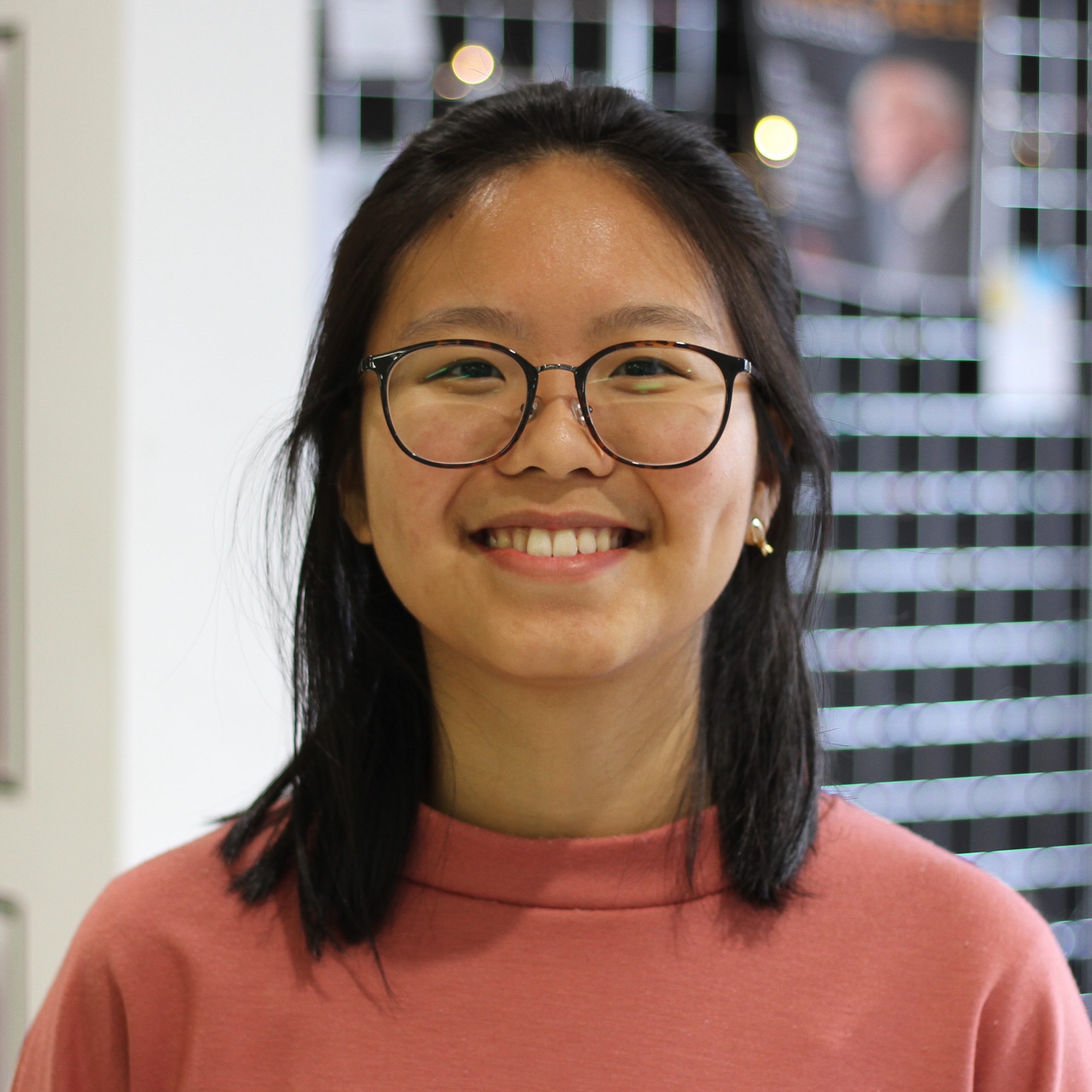
Willow Wong
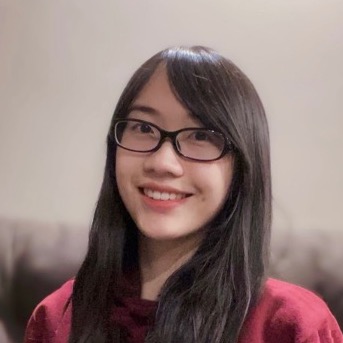
Wenxi Zhang
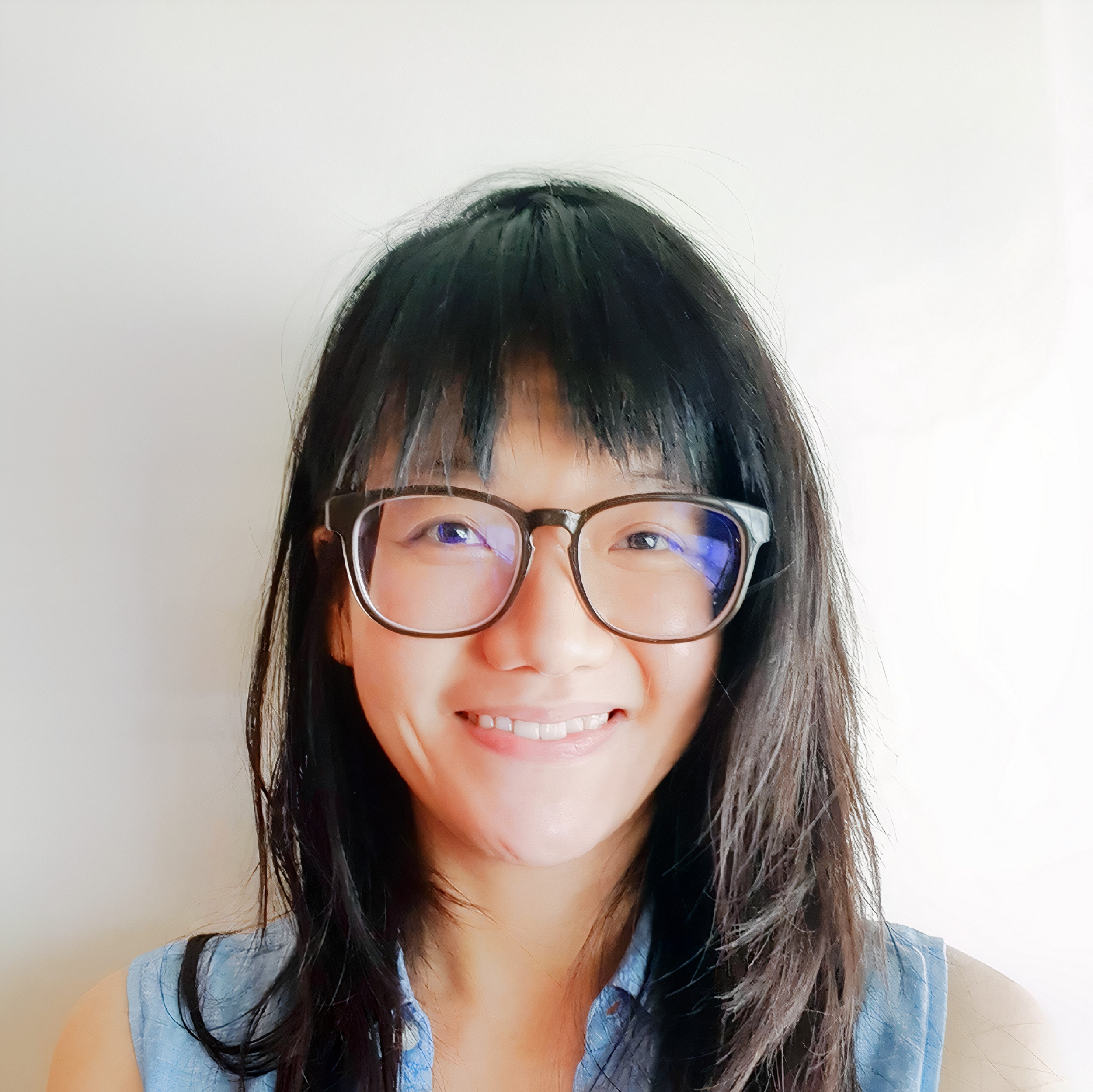
Li Min Ong
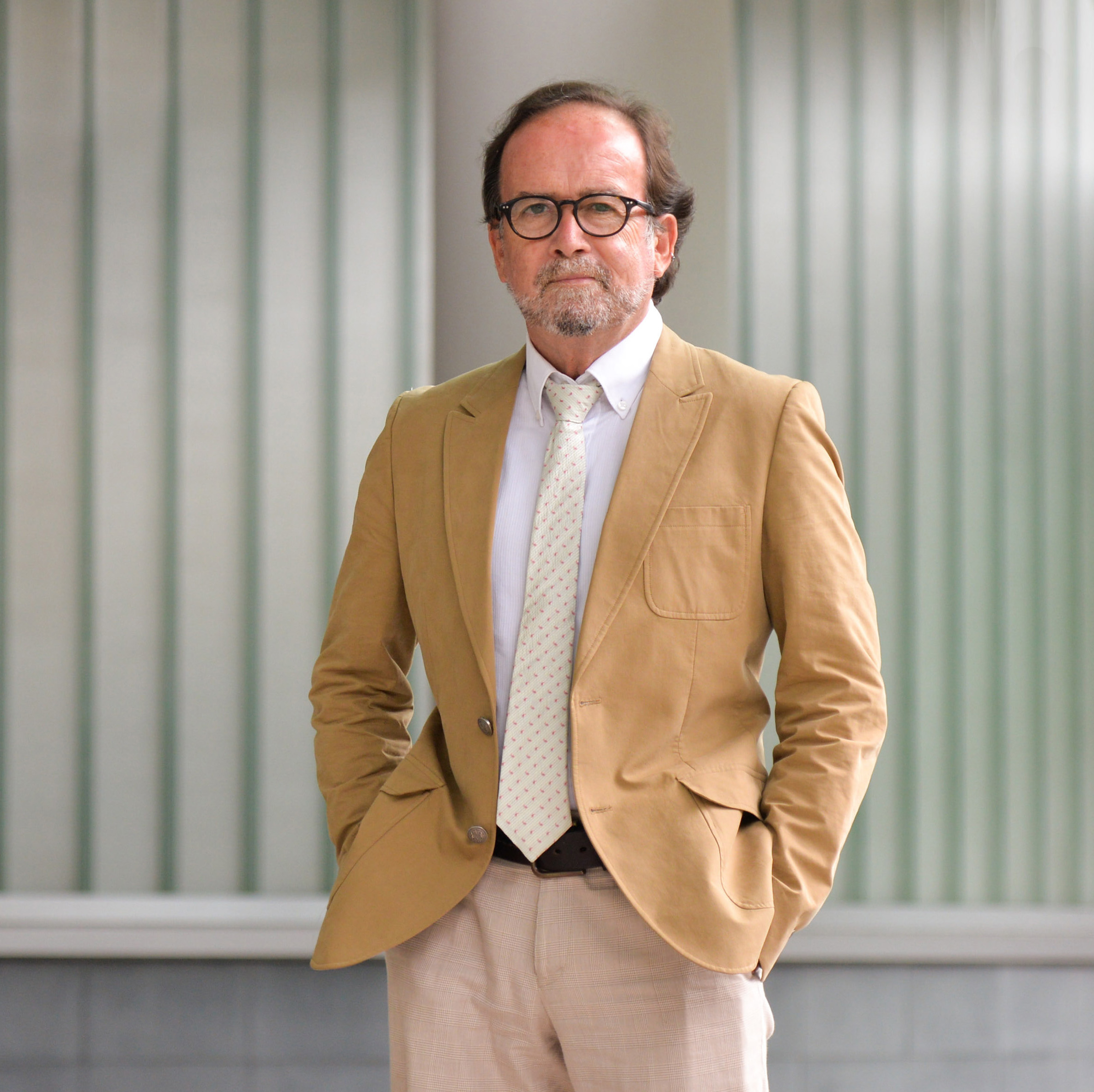
Mark Findlay
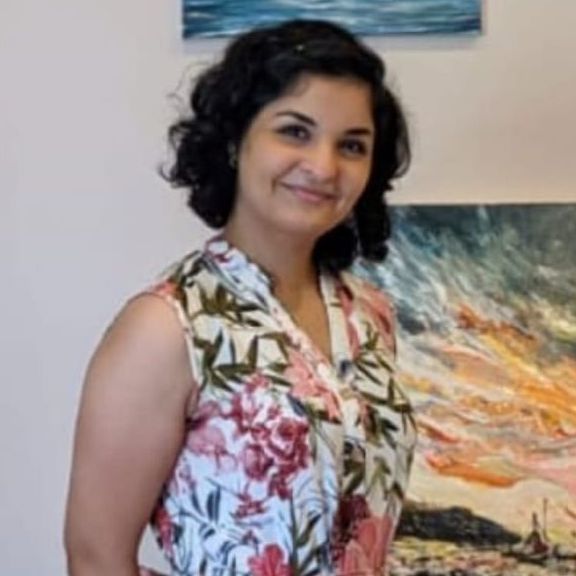
Xenia Bapasola
Xenia Bapasola is an art educator and artist from Mumbai, India. Having moved to Singapore to pursue her BA in Fine Arts at Lasalle College of the Arts, she found her passion in teaching and connecting with others through art. Xenia employs art as a medium to unite individuals with their internal world, thus allowing them to better understand themselves and those around them. She believes that art should not be a privilege, but instead, should be an imperative as it is vital to both intrapersonal and socio-cultural development. Xenia strives to further the accessibility of art for every child and adult.
